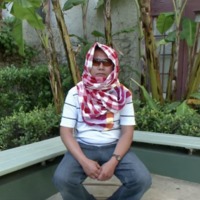
Chidi
There is an estimated 48,000 people living in modern slavery in Libya (GSI 2018). Libya is a major transit destination for migrants and refugees hoping to reach Europe by sea. Human trafficking networks have prospered amid lawlessness, created by the warring militias that have been fighting for control of territories since the toppling of Muammar Gaddafi in 2011. Highly organized trafficking and migrants smuggling networks that reach into Libya from Niger, Nigeria, Chad, Eritrea, Ethiopia, Somalia, Sudan, and other sub-Saharan states subject migrants to forced labor and forced prostitution through fraudulent recruitment, confiscation of identity and travel documents, withholding or non-payment of wages, debt bondage, and verbal, physical, and sexual abuse. In some cases, migrants reportedly pay smuggling fees to reach Tripoli, but once they cross the Libyan border they are sometimes abandoned in southern cities or the desert where they are susceptible to severe forms of abuse and human trafficking. Chidi was trafficked in Libya on his way to France. When his friend failed to pay the $3,000 fee to smugglers, he was locked up and tortured. Though his family took out loans to pay of his 'debt', he was later kidnapped and imprisoned once again. Chidi received support from Programme X including counselling, financial assistance and business skills training. He went on to set up a retail unit selling women’s accessories.

Thanit
There are an estimated 403,000 people living in conditions of modern slavery in the United States (GSI 2018). The US attracts migrants and refugees who are particularly at risk of vulnerability to human trafficking. Trafficking victims often responding to fraudulent offers of employment in the US migrate willingly and are subsequently subjected to conditions of involuntary servitude in industries such as forced labour and commercial sexual exploitation. Thanit mortgaged is house, farm and land to pay the recruiter’s fees that would take him to the United States. When he arrived in Hawaii, Thanit was housed in a small building with 22 other workers.

Bhagwan
The Global Slavery Index 2018 estimates that on any given day there were nearly 8 million people living in modern slavery in India. While the bonded labour system is formally abolished and criminalised, recent research indicated that bonded labour is still prevalent in India. A 2016 report found that in the state of Tamil Nadu, 351 of 743 spinning mills used bonded labour schemes, otherwise known as Sumangali schemes. Similarly in granite quarries, wage advances and loans with an interest ranging from 24% to 36% are used to bond workers. Situations of debt bondage are often aggravated by the need to raise emergency funds or take on loans for health crises. Bhagwan worked as a bonded labourer in Uttar Pradesh for eight years. Paying off debt he borrowed for his marriage, Bhagwan often went unpaid for his labour and was forced to work extra time to support his family. Bhagwan was finally able to leave his situation with the help of charitable organisation JEEVIKA.

Kunwar
The Global Slavery Index 2018 estimates that on any given day there were nearly 8 million people living in modern slavery in India. While the bonded labour system is formally abolished and criminalised, recent research indicated that bonded labour is still prevalent in India. A 2016 report found that in the state of Tamil Nadu, 351 of 743 spinning mills used bonded labour schemes, otherwise known as Sumangali schemes. Similarly in granite quarries, wage advances and loans with an interest ranging from 24% to 36% are used to bond workers. Situations of debt bondage are often aggravated by the need to raise emergency funds or take on loans for health crises. Kunwar took out a loan from a landlord to start building his house, working as a bonded labourer until he was 22, with his final debt being paid off when he was 33.

Aanya
India has a population of more than 1.3 billion people, there are still at least 270 million people living on less than US$1.90 per day. While laws, systems and attitudes regarding key 'fault lines' such as the caste system, gender and feudalism are rapidly changing, social change of this depth and scale necessarily takes time. In this context, it is perhaps unsurprising that existing research suggests that all forms of modern slavery continue to exist in India, including intergenerational bonded labour, forced child labour, commercial sexual exploitation, forced begging, forced recruitment into nonstate armed groups and forced marriage. Aanya was living in poor conditions and having to care for nine children when her husband fell sick. In order to pay for his treatment, she took a loan from a mahajan and was forced to work at his house to repay the debt. When one day she had to care for her husband and could not go in to work, the mahajan refused to allow her back to work, forcing Aanya to send her children to work in the fields to help repay back the debt.